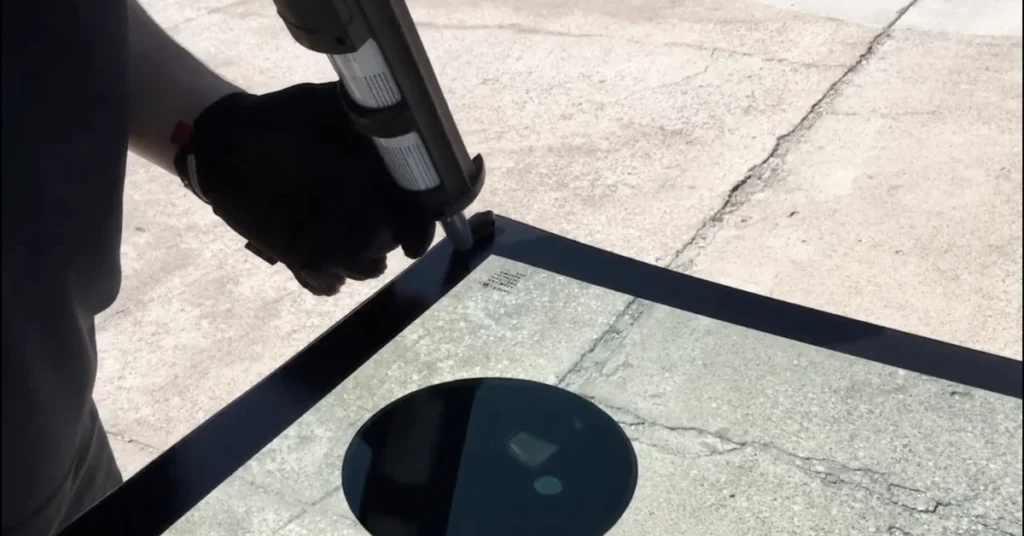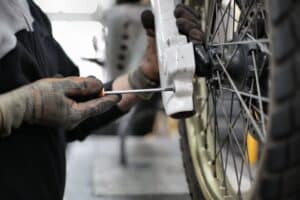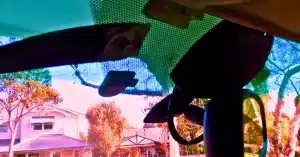Has your windshield been leaking lately? If the answer is yes, you might be a bit relieved to hear that many car owners regularly find moisture seeping through their windshields. Great to know that you are not alone, but what can you do to remedy the issue?
The first solution that might pop up in your mind is a windshield replacement. But in most cases, all you need to do for the problem to go away is to apply some windshield sealant. If you know how to apply windshield sealant, you can fix the predicament all by yourself.
Not familiar with window sealants? No worries, I will tell you all you need to know about it. If you want to learn how to use window sealants in the most effective and efficient way, spare a few minutes of your valuable time and stay with me for the rest of this article.
What Is Windshield Sealant?
Windshield sealant is an adhesive agent that you can use to fill up small crevices along the edges of the windshield. I am talking about the areas where the windshield connects to the car frame and the gasket.
Water can seep through even the smallest fractures or gaps in this area, wreaking havoc on your car’s interior and reducing visibility. When you apply the sealant, it flows into the cracks and fills them up.
Windshield sealants are watertight and can stand up to high temperatures, bad weather, and vibrations. These sealants, which come in the form of a gel, are designed to seep into the cracks between the windshield and the gasket, forming a tight seal.
After applying the sealant, you need to leave it for a while so that it gets dry and secures the bond. The windshield might appear a bit foggy around the edges, but it will get clear once the sealant dries off.

When Should You Consider Using A Sealant?
As great as windshield sealants are, they are not a universal solution to all of your windshield woes. If you have a giant crack on the windshield, you cannot fix it with sealants. Windshield sealants should be the solution when the windshield leaks without any noticeable openings.
How Many Types Of Windshield Sealants Are There?
Sealants come in many variations. A windshield sealant can be a silicone sealant, or it might have a polyurethane base. However, many experts recommend polyurethane sealants over other sealants because of their greater resilience against water and other adversities.
Silicone, modified silicone, acrylic, polyurethane and butyral are the most common windshield sealants you will find in the market. Silicone sealants are cheaper, and they tend to wear off faster than polyurethane sealants.
How To Apply Windshield Sealant?
Step 1. Identify The Cracks
The windshield crevices will not be visible to the naked eye. Grab a hose and spray on your windshield for a minute or so. Get inside the car afterward and check for leaky spots in the windshield.
Step 2. Cover The Windshield And Adjacent Areas With Masking Tape
Windshield sealants tend to clear off when they dry, but you would not want to take that chance. Cover your windshield with thick straps of masking tape along the edges. Cover the nearby car frame areas as well with masking tape to protect your car paint.
Step 3. Clean The Treatment Area
Your next course of action will be to clean the area where you intend to apply the sealant. It will not be ideal if there is rust, dust, or mold in the treatment area. It will be best if you do this a day before using the sealant.
Step 4. Make Room For The Sealant Tube To Go In
Now, make a tiny hole in the windshield seal to allow for the sealant tube to go in. Make sure that the hole is not too big. It just needs to be big enough for a small amount of sealant gel to flow in. Make the hole vertically so that the sealant can naturally flow downward.
Step 5. Insert The Tube Into The Windshield Hole
Insert the sealant tube into the hole you made and squeeze the tube to let out a small amount of sealant. You can use your finger to spread around the gel and make sure it disperses evenly.
Step 6. Allow The Sealant To Dry Off
After addressing the problem areas, let the sealant sit for 10 to 15 minutes. It should dry off within that time. Meanwhile, you should remove the masking tapes. If they are still there when the sealant settles, you might have a hard time removing them.
Step 7. Clean Up
Use some rubbing alcohol and a clean rag to remove the windshield glass sealant from the vehicle. Using a razor blade, you can carefully scrape away any excess that has crusted on the windshield.
Final Opinion
Windshield sealants are a cost-effective way to seal any minor leaks in the windshield and can help prevent those small cracks from getting bigger. The sealants work by filling in any gaps in the car’s weather stripping, which can improve the car’s ability to keep out moisture and dirt.
Applying a windshield sealant requires minimal time, cost, and effort and can easily be done as a do-it-yourself job. The sealant comes in a tube and needs to be applied around the edges of the windshield frame with a putty knife.
By following some simple steps, anyone can ensure they don’t have to spend extra money on a replacement windshield. Learning how to use windshield sealants is a simple but important life skill for any car owner and is worth the time spent to ensure their car is protected and running smoothly.




